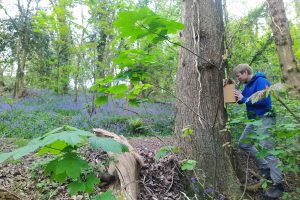A NORTH Wales council must prepare extra pitches for gypsies and travellers, cabinet members agreed.
Denbighshire’s revised gypsy and traveller accommodation assessment has found that the council needs 16 new pitches between now and 2027/28 and a further two by 2033.
Two years ago, a census counted 23 gypsy or Irish traveller households in the county and another 14 households identifying as Roma.
Despite this, the council acknowledge numbers are likely higher due to a low number of responses.
The assessment says a ‘transient site’ is not needed as the number of unauthorised camps in the county is low – with reports of just two unauthorised gypsy/traveller sites of seven pitches in total.
Cllr Emrys Wynne said the council must be ready and should also look at providing a transient site in the future.
“I think it would be a good thing for us to prepare ourselves for any demand that might arise in the future as we consider finding suitable sites within the county, and I’d like to think we are in a situation to be able to offer a solution – that we can offer the opportunity to travellers travelling through the county to be able to find somewhere conveniently before they move on,” he said.
“At the moment we know the situation isn’t convenient enough. We know for last year for example we saw travellers coming to one town in North Wales, and the same group travelled down to Ruthin. If a situation arose where there was a suitable site negotiated or something more permanent, I feel that would meet the demand that could arise at any time of the year. We know that it happens on an annual basis in some areas of the county.”
After reading the report, Cllr Julie Matthews added, “I was particularly interested in seeing how we are looking at how the assessment will continue to build the relationship with the gypsy and Roma traveller community. And OK, we are talking about our legal duties here, but we want to build those relationships with all residents in Denbighshire to enjoy their health and well-being, and I think this report has made a good start in that regard.”
The council is obliged to carry out a revision of its traveller accommodation as part of its local development plan in line with Welsh Government legislation.
Council officer Angela Loftus said Denbighshire’s processes in dealing with travellers had improved.
“We employ a gypsy and Roma liaison officer now, and we’ve got a far better process of managing unauthorised encampments, so there is early engagement with those families that are travelling through Denbighshire,” she said.
“So we ensure there are welfare checks undertaken and facilities such as bins and toilets provided for those families. So things have moved on, and we have a far better approach.”
The assessment said there were no travelling show people in need of accommodation, but the report said the council would monitor this.
Welsh data reveals just under half of gypsy or Irish traveller households had dependent children (45%), and that the median age of gypsies or Irish travellers was 26 years compared to the national median of 39 years for the whole population.
Just 6% of the gypsy or Irish traveller population were aged 65 years and over compared to a national figure of 16% for the general population.
Gypsies or Irish travellers below 20 years of age accounted for 39% of the population compared to the national figure of 24% as a whole, and those below 10 years of age accounted for 20% of the population compared to the national figure of 12%.
The report stated that gypsies or Irish travellers had the lowest proportion of people rating their health as good or very good at 70% compared to a national figure of 81%.
The report showed there is a higher proportion of gypsy or Irish traveller children and younger adults and significantly lower proportions of those aged 50 and over, due to higher birth rates and lower life expectancy.



















